-
 Bitcoin
Bitcoin $119100
0.00% -
 Ethereum
Ethereum $3649
-2.30% -
 XRP
XRP $3.213
-8.45% -
 Tether USDt
Tether USDt $1.000
-0.01% -
 BNB
BNB $783.2
-1.26% -
 Solana
Solana $191.1
-5.48% -
 USDC
USDC $0.9999
0.00% -
 Dogecoin
Dogecoin $0.2440
-8.65% -
 TRON
TRON $0.3103
-2.02% -
 Cardano
Cardano $0.8201
-7.68% -
 Hyperliquid
Hyperliquid $44.25
-3.09% -
 Stellar
Stellar $0.4326
-7.78% -
 Sui
Sui $3.777
-5.00% -
 Chainlink
Chainlink $18.34
-6.34% -
 Hedera
Hedera $0.2477
-8.72% -
 Bitcoin Cash
Bitcoin Cash $521.0
-0.79% -
 Avalanche
Avalanche $24.08
-6.29% -
 Litecoin
Litecoin $113.5
-6.79% -
 UNUS SED LEO
UNUS SED LEO $8.970
-0.16% -
 Shiba Inu
Shiba Inu $0.00001397
-8.55% -
 Toncoin
Toncoin $3.231
-2.27% -
 Ethena USDe
Ethena USDe $1.001
0.03% -
 Polkadot
Polkadot $4.174
-6.93% -
 Uniswap
Uniswap $10.37
-4.08% -
 Monero
Monero $317.6
-1.77% -
 Bitget Token
Bitget Token $4.720
-2.36% -
 Pepe
Pepe $0.00001290
-8.38% -
 Dai
Dai $1.000
0.02% -
 Aave
Aave $293.2
-4.95% -
 Bittensor
Bittensor $431.1
-3.60%
How to confirm the short-term callback of 15-minute Bollinger Band outer track return + 5-minute KDJ dead cross?
When the 15-minute price touches the upper Bollinger Band and closes back inside, watch for a 5-minute KDJ dead cross above 80 for a high-probability short entry.
Jul 24, 2025 at 05:43 am
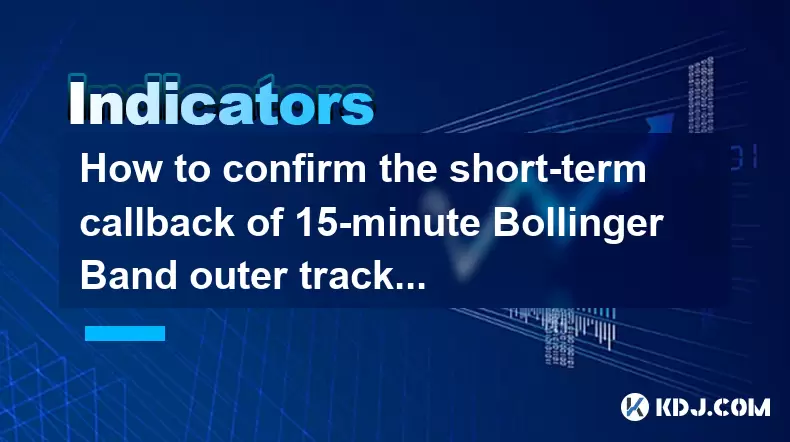
Understanding the 15-Minute Bollinger Band Outer Track Return
The Bollinger Bands indicator consists of three lines: the middle band (typically a 20-period simple moving average), the upper band (middle band + 2 standard deviations), and the lower band (middle band – 2 standard deviations). When the price touches or moves beyond the upper Bollinger Band on a 15-minute chart, it often signals overbought conditions. Traders interpret this as a potential short-term reversal or pullback, especially if the candlestick closes back inside the band.
To confirm a valid outer track return, observe whether the price forms a bearish candlestick pattern (such as a shooting star or bearish engulfing) at or near the upper band. Volume should ideally show a spike on the breakout attempt, followed by a decline as the price retreats, indicating weakening momentum. The first key signal is the price closing back within the bands after touching the upper boundary. This suggests that upward momentum is exhausted and a short-term callback may be imminent.
Interpreting the 5-Minute KDJ Indicator Dead Cross
The KDJ indicator is a stochastic oscillator that includes three lines: K, D, and J. The K line is the fastest, D is the signal line, and J reflects the deviation of K from D. A dead cross occurs when the K line crosses below the D line in the overbought zone (typically above 80). On the 5-minute chart, this signals a short-term bearish momentum shift.
To validate the dead cross:
- Ensure both K and D are above 80, indicating overbought conditions.
- Confirm that the cross happens after a recent price peak.
- Check for divergence between price and KDJ—price makes a higher high while KDJ makes a lower high, strengthening the reversal signal.
The 5-minute chart provides finer granularity, allowing traders to time entries with precision. When the K line crosses below the D line under these conditions, it reinforces the likelihood of a downward correction, especially when aligned with the 15-minute Bollinger Band signal.
Combining Timeframes for Higher Accuracy
Using multiple timeframes increases the reliability of trading signals. The 15-minute Bollinger Band outer track return sets the broader context for a potential reversal, while the 5-minute KDJ dead cross offers a precise entry trigger.
To synchronize these signals:
- Monitor the 15-minute chart for price touching the upper Bollinger Band and closing back inside.
- Switch to the 5-minute chart and wait for the KDJ lines to enter the overbought zone.
- Watch for the K line to cross below the D line shortly after the 15-minute confirmation.
- Ensure both signals occur within a 3–5 minute window to maintain temporal relevance.
This confluence reduces false signals. For example, if the 15-minute chart shows a touch of the upper band but the 5-minute KDJ remains below 80 or shows no cross, the setup is invalid. Only when both conditions are met should a trader consider initiating a short position.
Execution Steps for the Short Setup
When both conditions align, follow these steps precisely:
- Confirm the 15-minute candle has closed back inside the Bollinger Bands after touching the upper band.
- Switch to the 5-minute chart and verify that the KDJ is above 80.
- Wait for the K line to cross below the D line—this is the trigger.
- Place a sell limit order slightly below the 5-minute candle’s low that formed the cross.
- Set a stop-loss above the recent swing high on the 5-minute chart, typically 3–5 ticks above.
- Use a take-profit level at the middle Bollinger Band on the 15-minute chart, or the nearest support level.
Use TradingView or MetaTrader to set up alerts for Bollinger Band touches and KDJ crosses to avoid missing entries. Enable sound alerts for KDJ crosses above 80 to react quickly.
Risk Management and Position Sizing
Even with high-probability setups, risk must be controlled. Never risk more than 1–2% of your trading capital on a single trade. For example, if your account is $10,000, limit risk to $100–$200 per trade.
Calculate position size based on stop-loss distance:
- Determine the difference between entry price and stop-loss level.
- Divide the maximum risk amount by this difference to get the number of units or contracts.
For instance:
- Entry: $30,000 on BTC/USDT
- Stop-loss: $30,150 (150 USDT above)
- Risk per contract: $150
- Max risk: $200
- Position size: $200 / $150 = 1.33 contracts → round down to 1 contract
Use trailing stops after the price moves in your favor by 1.5 times the initial risk. Avoid holding the position beyond the next major support/resistance level or if the 15-minute candle breaks back above the upper Bollinger Band.
Common Pitfalls and How to Avoid Them
Traders often misinterpret signals due to timing mismatches or ignoring context. One common error is acting on a KDJ dead cross that occurs below 80—this is not a valid overbought signal. Only crosses in the overbought zone count.
Another mistake is ignoring volume. A strong breakout above the Bollinger Band with high volume may indicate continuation, not reversal. Wait for volume to decline on the pullback to confirm weakness.
Avoid trading during low-liquidity periods such as weekends or major news events, as volatility can distort indicator behavior. Also, ensure your chart data is synchronized across timeframes—some platforms lag 5-minute updates.
Never rely solely on this setup without confirming broader market sentiment. If Bitcoin is in a strong uptrend on the 1-hour chart, shorting based on this signal may go against the trend. Use the 1-hour trend direction as a filter—only take short signals when the higher timeframe is neutral or bearish.
Frequently Asked Questions
Q: Can I use this strategy on altcoins?
Yes, but ensure the altcoin has sufficient liquidity and volatility. Low-volume coins may generate false KDJ signals due to price manipulation. Stick to top 50 cryptocurrencies by market cap and verify that trading volume supports the price action.
Q: What if the KDJ dead cross happens before the 15-minute Bollinger Band touch?
The sequence matters. If the 5-minute KDJ crosses down before the 15-minute price reaches the upper band, the signal is premature. Wait for the 15-minute confirmation. Premature entries often result in losses as momentum may still be rising.
Q: How do I adjust the Bollinger Band settings for different assets?
The default 20-period, 2-standard deviation works for most cases. For highly volatile assets like meme coins, consider increasing to 2.5 standard deviations to reduce false touches. Backtest changes on historical data before live trading.
Q: Is it necessary to use both 15-minute and 5-minute charts, or can I rely on one?
Both are essential. The 15-minute chart provides the reversal context, while the 5-minute offers timing. Using only one increases the chance of false signals. The synergy between timeframes is what makes the strategy effective.
Disclaimer:info@kdj.com
The information provided is not trading advice. kdj.com does not assume any responsibility for any investments made based on the information provided in this article. Cryptocurrencies are highly volatile and it is highly recommended that you invest with caution after thorough research!
If you believe that the content used on this website infringes your copyright, please contact us immediately (info@kdj.com) and we will delete it promptly.
- South Korea's Credit Card Industry Embraces Stablecoin Regulations: A New Era?
- 2025-07-24 10:30:12
- Trump, AI, and Deregulation: A Wild West Tech Landscape?
- 2025-07-24 10:30:12
- Bitcoin Cash (BCH) Price Forecast & Trends: What's the Buzz?
- 2025-07-24 08:50:12
- Public Companies and Ethereum: A $3.2 Billion Bet on the Future?
- 2025-07-24 09:10:12
- XRP, Safe Havens, and BTC Miners: Navigating Crypto's Latest Moves
- 2025-07-24 08:30:12
- XRP, SEC, and ETFs: A Crypto Rollercoaster
- 2025-07-24 09:10:12
Related knowledge
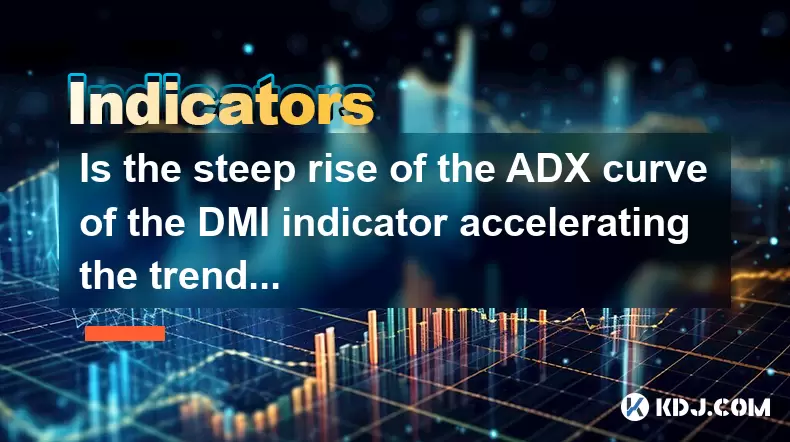
Is the steep rise of the ADX curve of the DMI indicator accelerating the trend or about to reverse?
Jul 24,2025 at 11:15am
Understanding the DMI Indicator and Its ComponentsThe Directional Movement Index (DMI) is a technical analysis tool used to identify the presence and ...
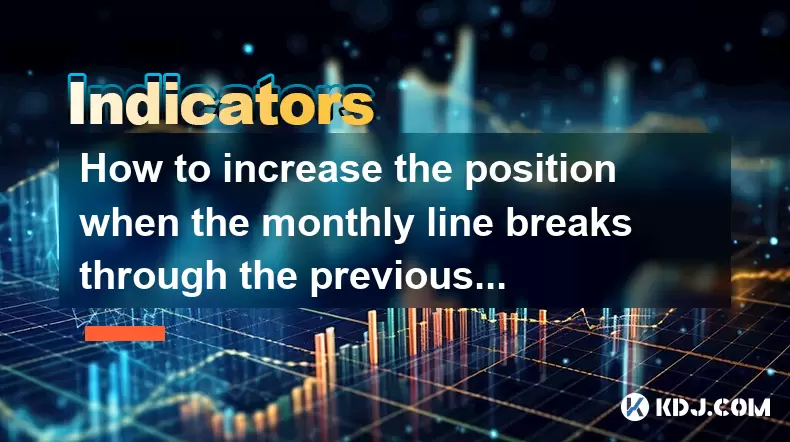
How to increase the position when the monthly line breaks through the previous high + the weekly KD golden cross + the daily line gaps?
Jul 24,2025 at 09:42am
Understanding the Monthly Line Breakout Beyond Previous HighWhen the monthly line breaks through the previous high, it signals a powerful shift in lon...
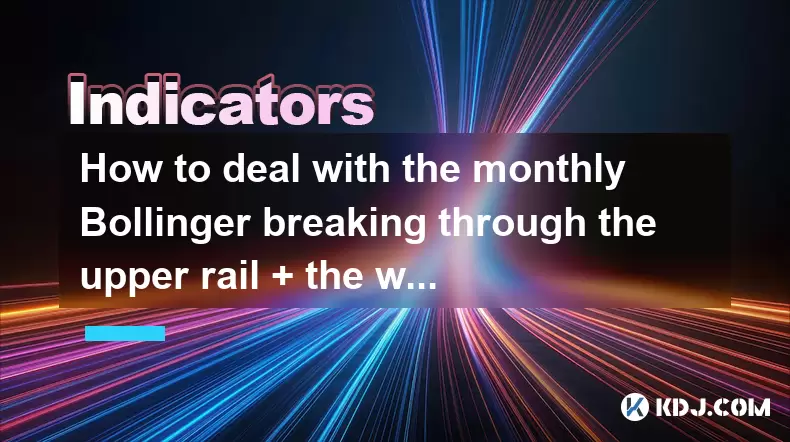
How to deal with the monthly Bollinger breaking through the upper rail + the weekly RSI overbought + the daily line's long negative correction?
Jul 24,2025 at 08:42am
Understanding the Bollinger Bands Breakout on the Monthly ChartWhen the monthly Bollinger Bands experience a breakout above the upper rail, it signals...
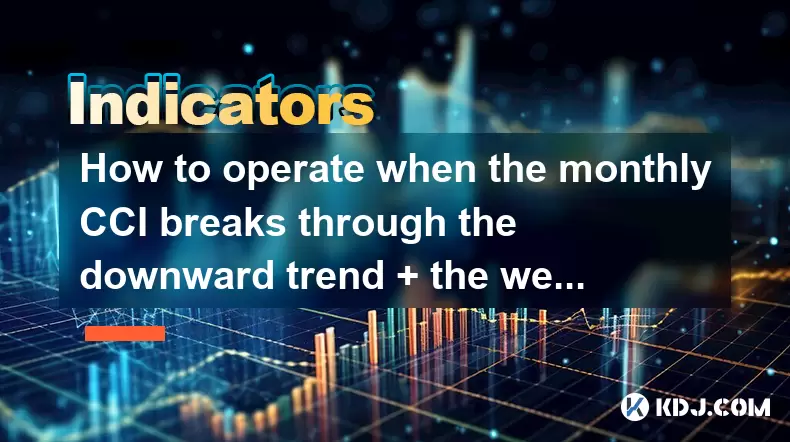
How to operate when the monthly CCI breaks through the downward trend + the weekly line's three consecutive positives + the daily line's shrinking volume and stepping back?
Jul 24,2025 at 09:00am
Understanding the CCI Indicator and Its Role in Trend AnalysisThe Commodity Channel Index (CCI) is a momentum-based oscillator used to identify overbo...
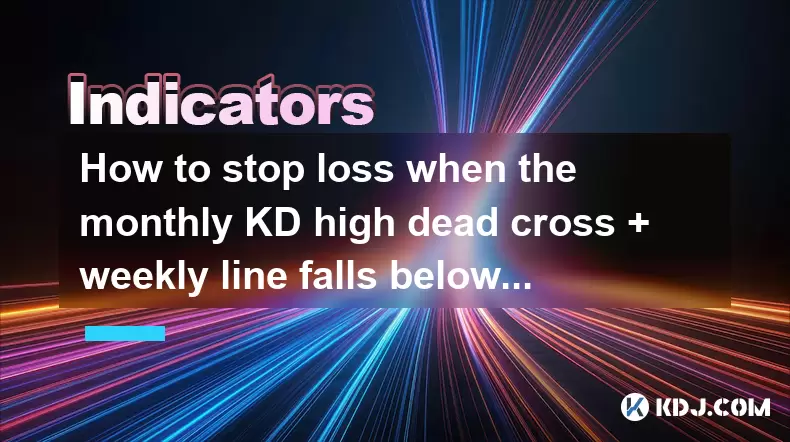
How to stop loss when the monthly KD high dead cross + weekly line falls below the 20-week line + daily line pulls back on the 5-day line?
Jul 24,2025 at 07:00am
Understanding the Indicators: KD, Weekly, and Daily Moving AveragesWhen traders analyze cryptocurrency price movements, they often rely on technical i...
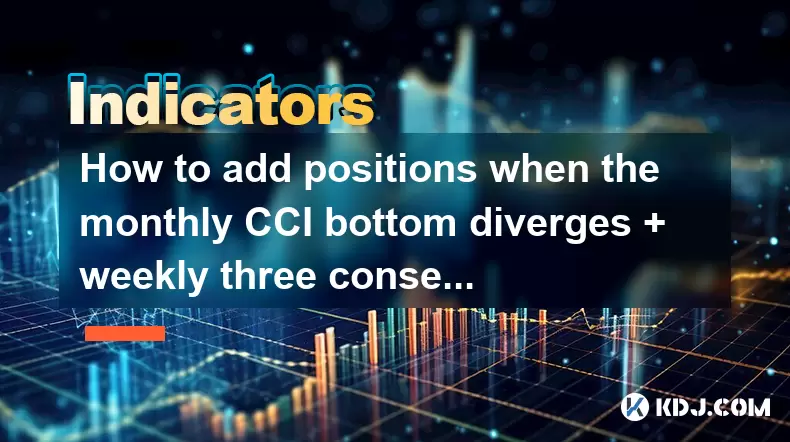
How to add positions when the monthly CCI bottom diverges + weekly three consecutive Yang + daily line gap is not filled?
Jul 24,2025 at 05:22am
Understanding the Monthly CCI Bottom DivergenceWhen analyzing the monthly CCI bottom divergence, traders are identifying a potential reversal signal i...

Is the steep rise of the ADX curve of the DMI indicator accelerating the trend or about to reverse?
Jul 24,2025 at 11:15am
Understanding the DMI Indicator and Its ComponentsThe Directional Movement Index (DMI) is a technical analysis tool used to identify the presence and ...

How to increase the position when the monthly line breaks through the previous high + the weekly KD golden cross + the daily line gaps?
Jul 24,2025 at 09:42am
Understanding the Monthly Line Breakout Beyond Previous HighWhen the monthly line breaks through the previous high, it signals a powerful shift in lon...

How to deal with the monthly Bollinger breaking through the upper rail + the weekly RSI overbought + the daily line's long negative correction?
Jul 24,2025 at 08:42am
Understanding the Bollinger Bands Breakout on the Monthly ChartWhen the monthly Bollinger Bands experience a breakout above the upper rail, it signals...

How to operate when the monthly CCI breaks through the downward trend + the weekly line's three consecutive positives + the daily line's shrinking volume and stepping back?
Jul 24,2025 at 09:00am
Understanding the CCI Indicator and Its Role in Trend AnalysisThe Commodity Channel Index (CCI) is a momentum-based oscillator used to identify overbo...

How to stop loss when the monthly KD high dead cross + weekly line falls below the 20-week line + daily line pulls back on the 5-day line?
Jul 24,2025 at 07:00am
Understanding the Indicators: KD, Weekly, and Daily Moving AveragesWhen traders analyze cryptocurrency price movements, they often rely on technical i...

How to add positions when the monthly CCI bottom diverges + weekly three consecutive Yang + daily line gap is not filled?
Jul 24,2025 at 05:22am
Understanding the Monthly CCI Bottom DivergenceWhen analyzing the monthly CCI bottom divergence, traders are identifying a potential reversal signal i...
See all articles

























































































